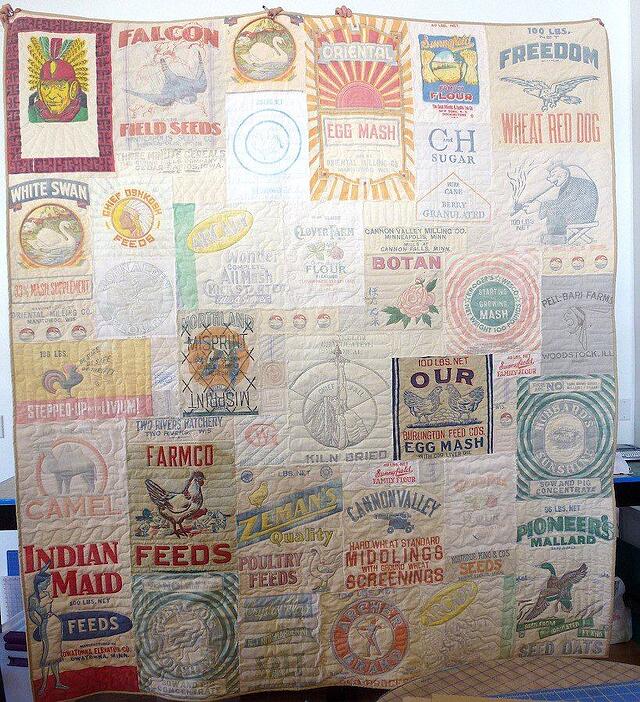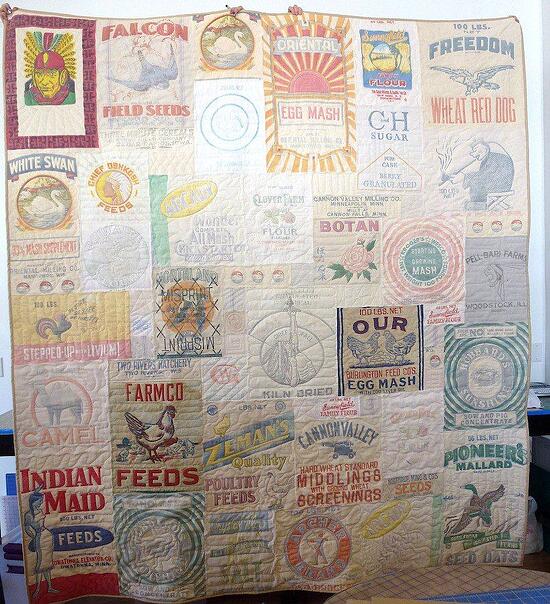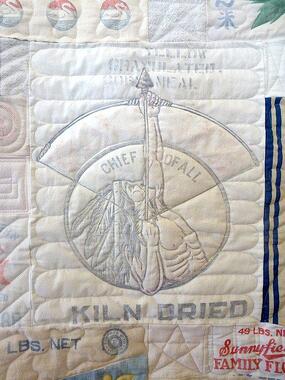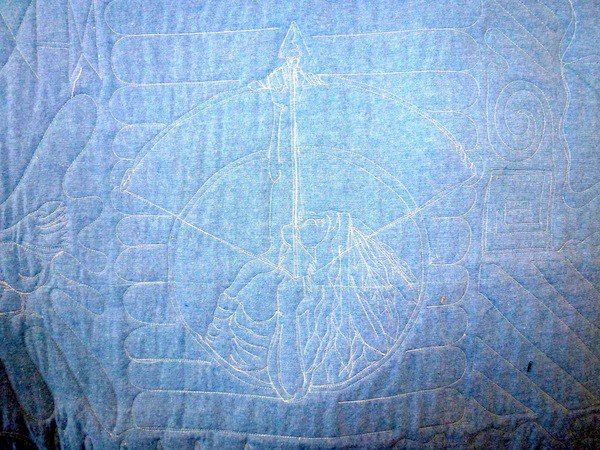
A Brief History of Advertising Feed Sacks

The history of feed sacks is the story of the transportation of consumer goods. Consumer goods had been transported in wood barrels and boxes for centuries.
By the mid 1850’s the southern US states were producing overabundance of cotton. Combine the excess cotton with advancements in sewing machine technology and you have the birth of the cotton feed sack.
Cotton feed sacks replaced wooden boxes and barrows. The result was that the transportation of goods grew easier and lighter.
At this same time, rural and poor families were struggling to make a living. The goods they consumed were now coming in cotton sacks. The cotton in the feed sacks became as nearly as valuable to them as the product in the sack. With nearly two yards of fabric in some sacks, the women of the era leaned how to reuse the cotton to make so many things their families needed. From towels to underwear, the cotton was repurposed.
 Companies manufacturing these bags quickly understood the secondary value of the feedbags. Initially they provided instructions right on the bags for whitening the bags – essentially removing the writing from the bags.
Companies manufacturing these bags quickly understood the secondary value of the feedbags. Initially they provided instructions right on the bags for whitening the bags – essentially removing the writing from the bags.
As the reuse of the cotton fabric from these bags grew in popularity, the manufacturers began printing on the bags fabric designs, doll patterns, embroidery patterns and other ways to use the bags. Manufacturers competed with each other to come up with something to add value to their bags so that the products in the bags would in turn be more desired.
This is some early advertising branding. By the late 1940's most products shipped in either plastic or paper sacks. That ended the cloth feed sack era.
Where Our Customer Found Her Feed Sacks
 "I love antiques and my house has more antiques than I need... :-) Actually I have a "sickness" for collecting. And NO, I have not started a 12-step program.
"I love antiques and my house has more antiques than I need... :-) Actually I have a "sickness" for collecting. And NO, I have not started a 12-step program.
I started with collecting a couple of feed sacks because I liked the printed logo on the fabric. Initially, I was going to frame the sacks. However, I kept finding ones that I liked.
Then I thought about having a quilt made from them and decided I could continue to collect them and not feel guilty. See...the sickness is back!!!
I found most of the feed sacks at flea markets where the prices were very reasonable which also helped feed my sickness. :-) So once I found the Too Cool T-shirt Quilts website, the quilt came to fruition and it is wonderful!"
About the Quilt
Marilyn’s quilt is made from advertising feed sacks. These bags came in all different sizes. Our T-shirt quilt method that uses all different size blocks was a perfect solution for this quilt. It allowed us to combine very large and very small sacks into a cohesive quilt top.
The imagery on the sacks is very interesting. The sacks feature many different animals – falcons, eagles, swans, ducks, chickens and camels. There is also Native American and Chinese figures on the sacks.
The feed sacks are old and the printing on many of the sacks is very faded. This gave us a challenge when choosing a backing material color. Any colored fabric we put next to the quilt top was just too bright. We choose a faded blue jean colored fabric for the backing. It looked as faded as the feed sack.
Below is a close up of the front of the quilt. The second photo is that same block but on the back of the quilt.


How to Have Feed Sack Quilt Made
If you like this quilt, start collecting advertising feed sacks yourself.
We are happy to make a quilt for you from your feed sack collection. Here's what you need to do:
- Please wash and iron your feedsacks before you send them to us.
- Then follow the directions for having a T-shirt quilt made. Here's how...
The cost feed sack quilt is the same cost of a T-shirt quilt of that size.
Andrea Funk is the inventor of T-shirt quilts made with multiple blocks sizes. The modern method of making T-shirt quilts. In 1992 she founded Too Cool T-shirt Quilts. Her life has been immersed in T-shirt quilts ever since.
